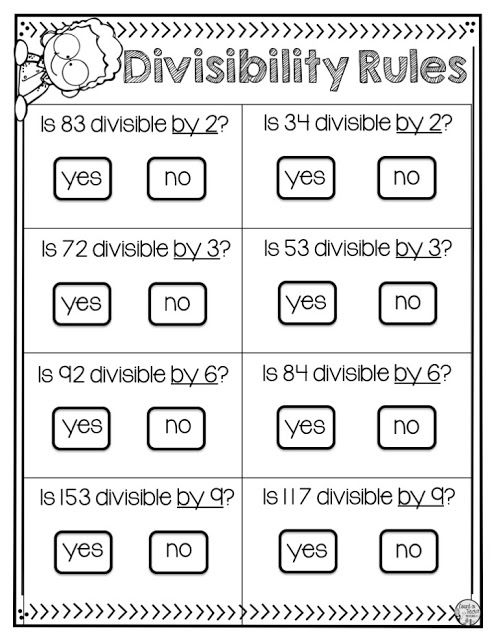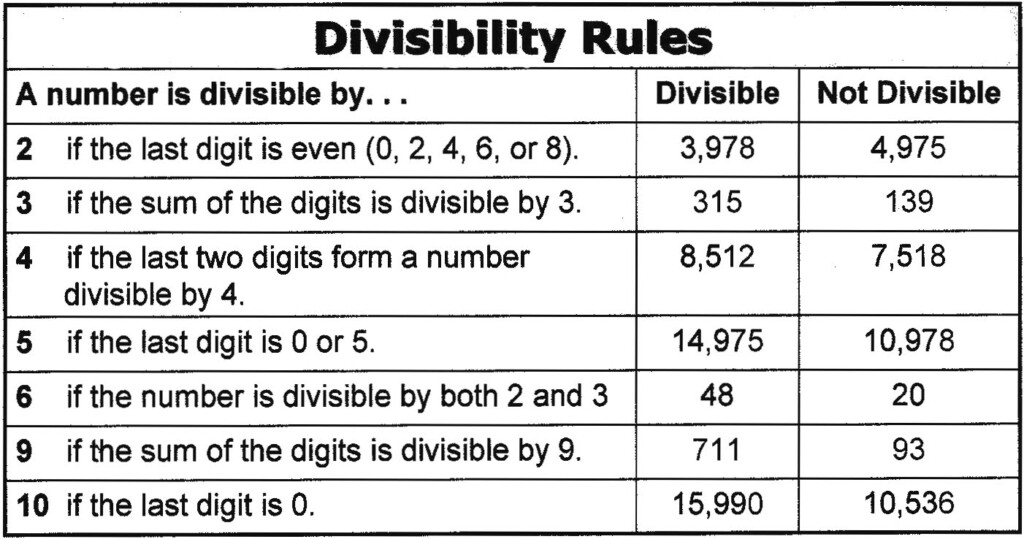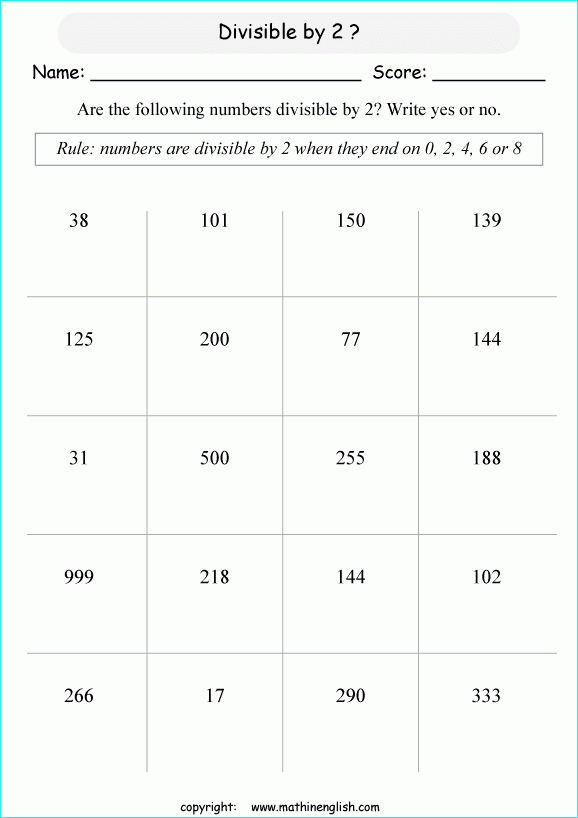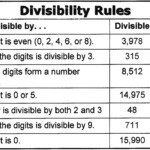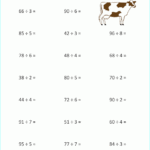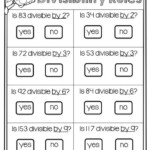Divisibility Rule Worksheet – Use worksheets to practice division. They are a great opportunity to master math concepts as well as prepare for arithmetic tests. Many formats is available for worksheets, including whole numbers and decimals.
entire numbers
Your child can learn the basics of mathematical operations on whole number by providing him with a workbook regarding division of whole numbers. Divide whole numbers worksheets can be used for homework, helping to develop division abilities, practice them and aid in understanding. The worksheets are illustrated using real-world examples and photos.
You will find a large variety of worksheets for division. They include worksheets with numerous digits as well as long divisions. Multi-digit integers are divided by their divisors on worksheets for multidigit division. Students determine the remainder and quotient. The standard procedure is used for long division worksheets.
There are worksheets that break whole numbers into fractions. This is an excellent method to help students improve their ability to think and make math a easy for them to grasp.
Rule of Divisibility
Use division worksheets with divisibility rules that help kids grasp the concept of divisibility. These worksheets can keep children engaged and assist them in solving division problems. These worksheets are also helpful to help children remember and comprehend information more quickly.
Children are asked to mark the numbers that are divisible by the numbers specified on a worksheet about divisibility rules. These worksheets help with fine motor skills, decision-making and teaching the concept of division. They can be useful in helping children track their progress, and to identify areas of their education that need improvement.
Divide a number in its digits in order to determine if it is divisible. Thus, the number has to be divided using the total of numbers. The last digit must be even.
fractional division
It’s a fantastic method to introduce fractions to kids using worksheets that help them split fractions. This is a great method of helping students prepare for algebra in higher grades.
Many students are struggling with fractional division on a daily basis. The difficulty lies in how difficult the concept can appear. Worksheets on fractions can help children avoid confusion. Children can use these to check their answers. It might be helpful to use worksheets to divide fractions in class.
Worksheets for division of fractions contain word problems, images and diagrams. Students are able to practice writing fractions using mixed numbers with these worksheets as well. These worksheets are available in many difficulty levels. They are designed for children who are in grades ranging from third through sixth.
Decimal division
Dividing whole numbers is similar to decimal division. However, there’s no remainder when decimal division is used. When you divide a decimal the decimal point must be moved to its right. Round up or decrease depending on the number which is following the decimal point.
First, you must determine the quotient prior to when you can divide a decimal. A decimal quotient is the sum of the divisor’s products as well as the dividend. It could be one integer, multiples of 10, or multiples of 100.
A decimal quotient, in most cases is rounded to a predetermined amount of decimal places. This is done by using trailing zeros. Because the dividend amount is 0.4 and the divisor worth 4.88, for instance the process of the process of dividing 48.8 by 4 is a decimal division.
For large numbers to be divided, you can use powers of 10.
The power of ten is a fundamental concept. It is extremely useful when it comes to dividing huge numbers. You should be able alter the decimal point regardless of whether you are splitting a decimal or a whole number.
A large number must be subdivided by decimal points to the extent that there are zeros in the power of ten. This means that the value of the number will increase as the original value is reduced. The decimal points will move left if it’s less than the value that was initially set. It will move right if it’s bigger. If it is smaller than one, the number of exponents for the value will be lower.
You must subtract the exponents within the divisor of the exponents. The scientific explanation for this procedure can be found here
